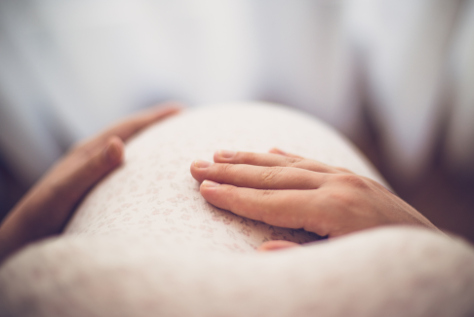Am I having Braxton Hicks contractions?
What are Braxton Hicks contractions and how do you know if you have them?
At a glance
- Braxton hicks can be uncomfortable but harmless
- Some people call these 'practice contractions'
- They can start early on in pregnancy

What are Braxton Hicks and what do they feel like?
First things first, not all women experience Braxton Hicks, so don’t worry if you haven’t got a clue what we’re talking about. However, you may want to brush up on what these are because they can happen in the second trimester and intensify right to the end of your pregnancy. So even if you don’t have them now you may experience these later on.
Why are they called Braxton Hicks?
Named after the English doctor who first noted that pregnant women felt contractions as their pregnancy progressed without being near birth.
The best way to describe Braxton is as ’practice’ contractions and the way your body begins to prepare itself for the birth of your very special new arrival. They can feel almost like period pains as your womb contracts and tightens. Your bump can become hard and then relaxing again becoming soft.
Although uncomfortable, may women claim that they aren’t painful and they also only last for less than a minute before easing off.
However, we can see why you may think these might be contractions as they can happen several times a day!
Why do Braxton Hicks happen?
No-one really knows why Braxton Hicks happen, but some experts think they help increase the flow of blood to the placenta and the transfer of oxygen to the foetus. They are also thought to soften and tone the muscles of the uterus and get it ready for labour.
When do they start?
They can actually start from as early as six or seven weeks, although most women don’t notice them until the later months. Over the final weeks of pregnancy they become more intense and are sometimes referred to as ’false labour.’
Dehydration is thought to make them more uncomfortable, so drinking plenty of water can sometimes help. Other triggers include having a full bladder, having sex, spending too long on your feet and generally being very active.
Braxton Hicks could be eased by changing position, or lying down if you have been very active, relaxing or drinking some water to rehydrate.
How do I know it’s just Braxton Hicks?
Braxton Hicks contractions are irregular, don’t last long, and are fairly weak, without getting more intense. They may stop when you walk, rest or change positions.
When it comes to the real thing, labour contractions are regular, frequent, last for longer, are more painful, and get more intense as your labour progresses.
If your tummy remains constantly hard or the tightenings become regular and painful, it’s always best to call your midwife or maternity unit for advice. You can also find out more about the signs of labour.
How will I know I’m in labour? The million-dollar question…
You might think it would be obvious, but plenty of mums-to-be go to hospital thinking that they’re in labour, only to find out they need to go back home!
In the week or so before labouring you may notice:
- An increase in vaginal discharge
- Braxton Hicks contractions becoming more intense and tightenings feel like period pains
- A ‘show’ where the mucus like plug that’s been sealing the cervix comes away
- A mild dose of diarrhoea - nature’s way of clearing your bowel before labour begins
When you go into labour you may notice:
- A ‘show’ if it hasn’t already appeared – although not everyone notices losing their mucus plug
- Lower back pain as your baby settles well down
- Regular contractions that feel like period pains or tightenings across your bump
- Your waters breaking – either a gush or a gradual trickle